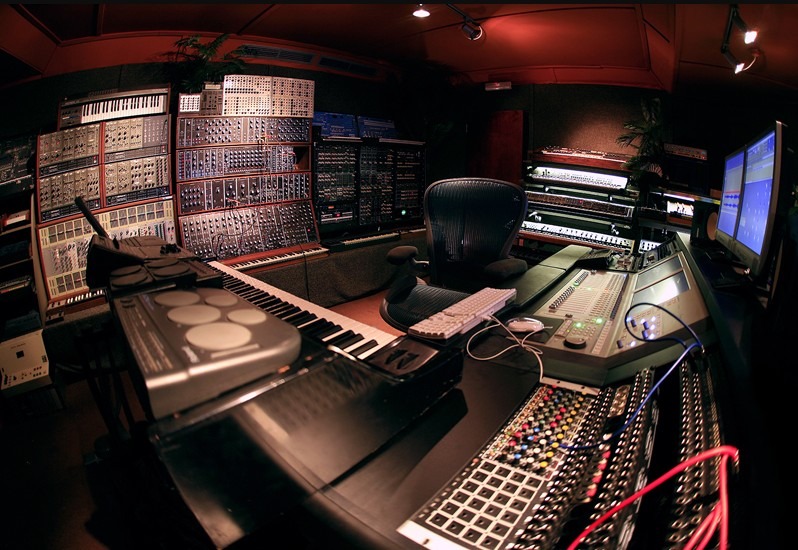From being an underground movement to being (a brief) mainstream phenomenon, the reception towards techno music is as evolving as the sound itself.
Techno is a genre of electronic dance music (EDM) that is distinctive for its repetitive patterns and a strong emphasis on rhythm. It follows the common time (4/4) and tends to be instrumentally-oriented.
Like many subgenres of electronic music, techno music employs electronic instruments such as drum machines, synthesizers, sequencers, samplers, keyboards, and computers. New and inexpensive technology made the creation of techno music possible. Several other music genres and cultural influences have contributed to the creation of techno music, such as synthpop, soul, funk, post-disco, electronica, electric jazz, and house music (particularly Chicago house music). Futuristic and science fiction themes, which permeated American culture at the time, were also significant influences. Techno music has also given birth to countless subgenres and inspired fusions that use techno music elements.
Techno music’s origins
Techno had its roots in Belleville, a suburb in Detroit, Michigan. Former high school classmates Juan Atkins, Kevin Saunderson, and Derrick May had collaborated together shortly before going on to record and release their own music separately. These three men, also known as “Belleville Three,” are acknowledged as the pioneers of techno.
The first known use of the term “techno” came about in 1988 when British music exec Neil Rushton approached the Belleville Three, as he sought to license their music to be released in the United Kingdom. The Belleville Three labeled their music as “techno,” as they wanted it to be distinct from Chicago house music.
Other musicians and DJ’s in the early Detroit techno scene included Eddie Fowlkes, James Pennington, and Blake Baxter, all of whom also came from Detroit. Along with the Belleville Three, they were considered as the “first wave” artists of Detroit techno.
Actually, the term “techno” had already been used in Detroit before 1988. In fact, Atkins had been using the term since his days with electronic music group Cybotron (“Techno City” was one of their earlier singles). However, it was only that time when “techno” was really used to describe the music when it was ready to be marketed to the public.
At the time, Atkins was doing a compilation of tracks of various artists. That compilation eventually came to be known as Techno! The New Dance Sound of Detroit, released in 1988. One of the compilation’s tracks, “Big Fun” by electro-dance group Inner City, became a huge hit in many European countries. It peaked at #8 on the UK singles chart. Thanks in part to the popularity of house music in many parts of Europe, Techno! The New Dance Sound of Detroit received a warm reception in the continent.
In the US, meanwhile, techno failed to take off outside of cities such as Detroit and Chicago. As it never found mainstream success in America, producers of techno music became frustrated. So several of the first and second wave techno artists (especially the ones coming from Detroit) took their musical ambitions instead in Europe where the music, nightclubs, and raves were becoming major events.
Divergence and decline of techno in the 1990s
By the early 1990s, techno had diverged widely in terms of the number of artists and producers in the UK and Europe. This led to the different styles of techno that had built on the Detroit techno sound.
In the UK, techno had even reached mainstream status, and it became “pop” music. Even independent music labels (notably Warp Records) had begun to build a roster of techno music artists to take advantage of the techno’s popularity, as well as to explore new areas of the genre.
But by the mid-1990s, a variety of underground dance music genres had emerged and been vying for attention. While some of these new forms of dance music were built on the Detroit sound, others fused elements of the preceding dance music forms. It led to diversified dance music styles that sounded far-flung from techno.
Also, dance music had become mainstream and commercialized at this point, which led to the decline of the rave and nightclub scene, with each faction having its own perspective on how dance music should evolve.
It also seemed that techno had become stagnant in terms of creativity, and underground techno artists were being drawn to styles other than techno. As techno was declining, there were now only a handful of techno music clubs that were still popular. By the end of the 1990s, “pure” techno had been fallen to the wayside, and other genres, such as post-techno, came to take its place.
Techno in the following years, and legacy
Techno would evolve to have several different styles. While techno and its offshoot genres have only occasionally produced commercially successful mainstream acts (such as Orbital and Underworld), the genre has influenced several other aspects of music.
Anyhow, techno has managed to stay itself relevant. Artists such as Madonna and the Irish rock band U2 have dabbled with the techno genre. R&B artist Missy Elliot introduced Cybotron’s song “Clear” in one of her single “Lose Control.” It resulted in a Grammy Award nomination for Atkins for his writing credit.
The original Detroit techno scene has helped to introduce a variety of subgenres, fusion genres, and the successive derivative forms of music. It has also cultivated a regional scene, such as the Nortec scene in Mexico in the early 2000s, the Schranz techno scene in Germany, and the Gabber techno scene in the Netherlands.
Techno has also branched out to a variety of sub-genres that include acid techno, hardcore techno, ambient techno, dub techno, etc. It has also helped to inspire fusion genres that incorporate techno elements such as Eurodance, trance, and IDM.
